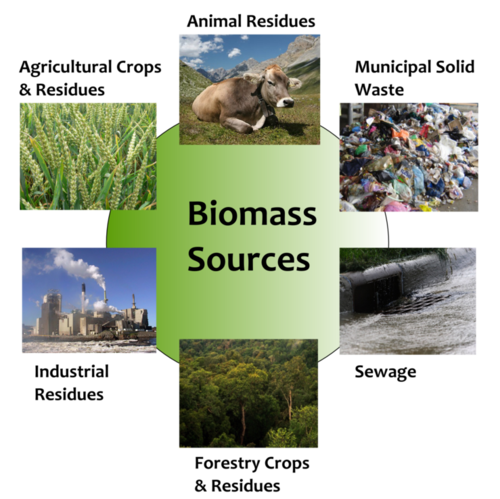Resource biomass
Biomass can be defined as the total weight of the living components (producers, consumers, and decomposers) in an ecosystem at any moment, usually expressed as dry weight per unit area. Biomass is a quantity per unit area; productivity is a rate of biomass gain per unit area [4].
The ultimate source of energy of this renewable biomass is inexhaustible solar energy, which is captured by plants through photosynthesis. It includes both terrestrial as well as aquatic matter, such as wood, herbaceous plants, algae, aquatic plants; residues such as straw, husks, corncobs, cow dung, sawdust, wood shavings, wood based panels, pulp for paper, paper board, and other wastes like disposable garbage, sewage solids, industrial refuse and so on.
Biomass can provide approximately 25% of our current energy demand, if properly utilized [5].



